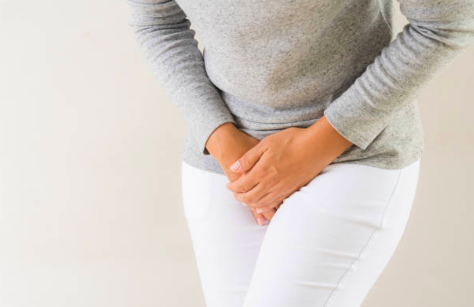Overactive bladder (OAB) is a common urologic condition that occurs when bladder muscles begin to act involuntarily, resulting in the frequent and urgent need to urinate. The urge may be very strong and, in some cases, lead to incontinence of urine. OAB affects both men and women with an estimated 40 percent of women in the U.S. experiencing OAB symptoms. Most adults urinate from four to seven times a day. Patients with OAB may need to use the bathroom up to 30 times a day. Women with OAB often experience urinary incontinence when they are unable to reach the toilet before involuntary urination begins.
The kidneys create urine, which then drains into the bladder. As the bladder fills, nerves in the bladder send signals to the brain that it’s time to urinate, or empty the bladder. Nerve signals cause the muscles of the pelvic floor and urinary sphincter to relax while causing the muscles of the bladder to tighten (contract), pushing out urine through the urethra. In cases of OAB, the bladder muscles start to contract because they receive a neurological signal to do so, but this is a faulty neurological signal because the bladder is not actually in need of emptying. OAB can also occur because bladder muscles are too active, contracting frequently and creating an urge to urinate.

Men & Women
Evaluation
A few simple office and laboratory tests, in conjunction with the history and physical examination, usually suffice for a diagnosis of overactive bladder (OAB). A urinalysis and culture (if urinary tract infection [UTI] is suspected) is indicated in patients being evaluated for OAB. In select individuals, further testing such as an assessment of post-void residual may be indicated.
Dr. Bankhead will look for clues that might also indicate contributing factors. The work-up will likely include:
•Medical
•History
•Physical Exam
•Urine Sample
•Neurological Exam
Special tests
Your doctor may order a simple urodynamic test to assess the function of your bladder and its ability to empty steadily and completely. These tests usually require a referral to a specialist, and may not be necessary to make a diagnosis or begin treatment. Tests include:
Measuring urine left in the bladder. This test is important if your bladder doesn’t empty completely when you urinate or experience urinary incontinence. Remaining urine (postvoid residual urine) may cause symptoms identical to an overactive bladder. To measure residual urine after you have voided, your doctor may request an ultrasound scan of your bladder or pass a thin tube (catheter) through the urethra and into your bladder to drain and measure the remaining urine.
Measuring urine flow rate. To measure the volume and speed of your voiding, you may be asked to urinate into a uroflowmeter. This device translates the data into a graph of changes in your flow rate.
Testing bladder pressures. Cystometry measures pressure in your bladder and in the surrounding region during bladder filling. During this test, Dr. Bankhead uses a thin tube (catheter) to fill your bladder slowly with warm water. Another catheter with a pressure-measuring sensor is placed in your rectum or, if you’re a woman, in your vagina. This procedure can identify whether you have involuntary muscle contractions or a stiff bladder that’s not able to store urine under low pressure.
Dr. Bankhead will review the results of any tests with you and he will suggest a treatment strategy.
Treatment
Treatments for OAB range from behavioral interventions, medications, injections and nerve stimulation to surgery.
Behavioral and lifestyle changes
Performing pelvic floor exercises, known as Kegels, strengthens the pelvic floor muscles and the sphincter, a urinary muscle. Scheduling toilet trips for every couple of hours, as well as managing and reducing fluid intake, will help women normalize their urine schedule. Bladder training involves delaying urination after the initial sensation hits and building up the intervals between urinating over time.
Medications
Medications prescribed for women with OAB are intended to relax the bladder and help mitigate symptoms. Botox bladder injections may stop the muscles of the bladder from contracting involuntarily.
Nerve Stimulation Therapy (InterStim)
Sacral nerve stimulation (SNS), InterStim and peripheral nerve stimulation (also called percutaneous neural stimulation or PTNS) attempt to regulate nerve impulse reactions. The procedure involves using removable, implantable device which can be activated by a patient to send mild electrical pulses to the sacral nerves located near the tailbone. Typically, a doctor will recommend a 1-2 week trial of the device for the patient to exact the effectiveness of the implant.
Nerve stimulation has been shown to help people with urinary retention and overactive bladder symptoms including urinary urge incontinence, urgency and frequency.
Surgery for overactive bladder
Treating OAB with surgery is not a common treatment course and is reserved for women whose other treatments plans have failed. Surgery may increase the physical size of the bladder by using portions of bowel to replace and expand a section of the bladder. Completely removing the bladder is always a last resort surgery.
Next Steps…
You don’t have to live with ED. Give us a call or send us an email to find a solution that fits your lifestyle.
